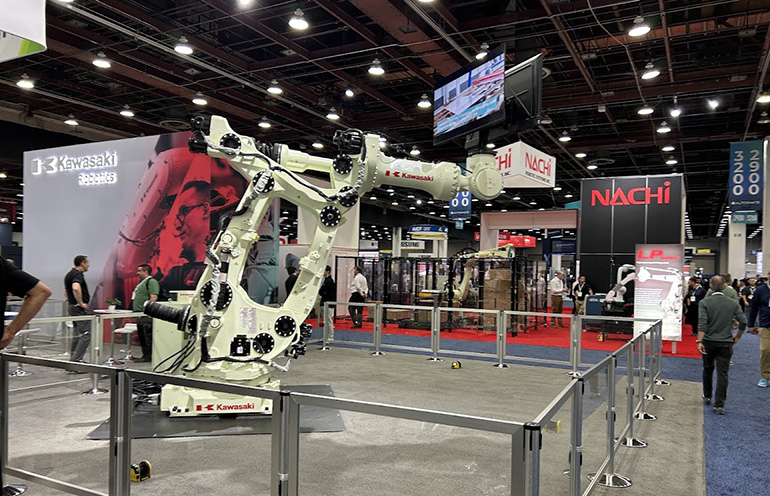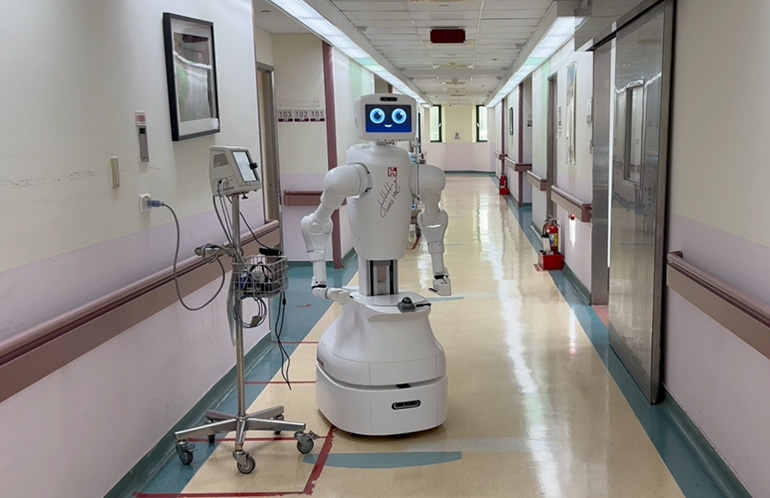Recapping Robotics Summit & Expo 2025

In Episode 195 of The Robot Report Podcast, our guest is Giovanni Campanella, the industrial automation and robotics general manager at Texas Instruments.
Show timeline
6:30 – Steve Crowe and Mike Oitzman recap the 2025 Robotics Summit & Expo from the Boston Convention and Exhibition Center
13:20 – Mike interviews Giovanni Campanella, industrial automation and robotics general manager at Texas Instruments (TI).
News of the week
Amazon’s Vulcan robot uses force sensing to stow items
Amazon has developed a new robot called Vulcan designed to pick items from bulk and place them onto the movable shelves. It is equipped with force-feedback sensors and AI, giving it a sense of touch. This allows Vulcan to manipulate objects with greater precision and dexterity.
According to Amazon, Vulcan can pick and stow approximately 75% of the items in its warehouses, moving them at speeds comparable to human workers.
Aaron Parness, director of applied science at Amazon Robotics, joined Steve Crowe, executive editor of The Robot Report, to discuss the technology behind Vulcan during a keynote at last week’s Robotics Summit. He explained the importance of touch and force sensing to the future of robotics at Amazon.
Amazon has deployed a number of robotic picking applications. Sparrow currently picks from totes, but it only picks from the top layer of the totes. The system has intelligence to identify items and plan trajectories, but it doesn’t require a sense of touch.
IEEE Transactions on Robotics papers:
Teradyne Robotics makes leadership changes at MiR, UR
Teradyne this week announced executive changes at both of its robotics divisions. Jean-Pierre Hathout transitions from leading Mobile Industrial Robots (MiR) to replacing Kim Povlsen as the president of Universal Robots (UR). Kevin Dumas succeeds Hathout as the new president of MIR. Povlsen is pursuing an external career opportunity.
This adjustment comes on the heels of recent Teradyne fiscal 2024 financial results. UR, a leading developer of collaborative robotic arms, declined 3% year over year, while autonomous mobile robot (AMR) developer MiR grew 1% year over year. Teradyne Robotics Group laid off 10% of its global staff in January 2024.
Teradyne also last week announced financial results for the first quarter of 2025. The company said robotics revenue was $69 million in Q1 2025, which is down from $98 million in Q4 2024. This also marked a 21% drop in sales in Q1 year over year.
In its quarterly report, Teradyne said “robotics continues to face ongoing end market weakness,” but it is delivering on its AI product portfolio, including the MiR 1200 Pallet Jack and UR AI Accelerator.
U.S. car industry robot installations grow by 10% in 2024
This week, the International Federation of Robotics (IFR) published its preliminary results for last year. It reported that U.S. automakers have invested in more automation.
Total installations of industrial robots in the automotive industry increased by 10.7%, reaching 13,700 units in 2024, according to the IFR. By contrast, the Association for Advancing Automation (A3) reported earlier this year that U.S. automotive sales dropped 15% in 2024 compared with 2023.
“The United States has one of the most automated car industries in the world. The ratio of robots to factory workers ranks fifth, tied with Japan and Germany and ahead of China,” stated Takayuki Ito, president of the IFR. “This is a great achievement of modernization. However, in other key areas of manufacturing automation, the US lags behind its competitors.”
The majority of industrial robots are imports from overseas, as few robot manufacturers are producing in the U.S. Globally, 70% of installations are produced by four countries: Japan, China, Germany and South Korea.
Within that group, Chinese manufacturers are the most dynamic, with production for their huge domestic market more than tripling from 2019 to 2023. This puts the country in second place after Japan.
The IFR credited China’s national robotics strategy for its success. The country’s manufacturing industry installed a total of about 280,000 units per year between 2021 and 2023, compared with a total of 34,300 installations in the U.S. in 2024.
In China, robotics and automation are penetrating all levels of production, as seen by its high robot density of 470 robots per 10,000 employees in manufacturing. That makes China the third highest in the world, surpassing Germany and Japan in 2023.
The U.S., on the other hand, ranks only tenth among the world’s most automated manufacturing countries, with a robot density of 295 robots per 10,000 employees. The country’s automation is heavily concentrated in the car sector: About 40% of all new industrial robot installations in 2024 were in automotive.
Podcast sponsored by SDP-SI
Our sponsor this month is SDP-SI.
Let’s dive into the critical role of precision, quality, and alignment in robotics design and assembly.
SDP/SI said its engineering experts go beyond the standard manufacturing process by reviewing your designs before production, offering cost-effective, space-saving solutions that streamline your entire assembly process.
Discover how the company can help robotics companies achieve unprecedented accuracy and efficiency.
Don’t miss this opportunity to learn how SDP/SI can elevate your robotics applications. Discover the difference!
Visit sdp-si.com/podcast/index.php

Now accepting session submissions!







Responses